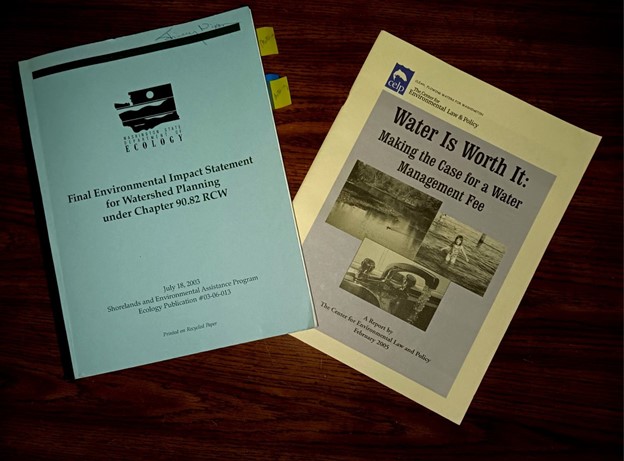Angeles Chapter’s Water Committee’s newer member Shirley Nixon, a former public interest environmental lawyer from WA state, ponders her continuing discoveries of differences between Washington & California’s approaches to water management.
As I drove south from Seattle in a car loaded with items too precious to entrust to the moving van, the startlingly depleted level of Lake Shasta, seen from the I-5 bridge, forewarned of unfamiliar water issues ahead. Seasoned water warriors generously helped teach me about California water law, and wondered about differences between WA and CA approaches. Where to begin?!? Similarities: both states follow the Prior Appropriation Doctrine, and public interest advocates must continuously combat the truism that Water Flows Toward Money. Differences: California has steered itself toward a ship-sinking iceberg; its “water plans” appear as useless in preventing a disaster as rearranging the deck chairs.
Examples:
Guiding principle and mindset for Washington lawmakers: All water – above and below ground, in lakes, streams, wetlands or ocean – belongs to the people and must be managed in the public interest. Washington recognized early that state regulation was required to protect the resource and reduce conflicts among competing water users. It established the Surface Water Code in 1917, the Groundwater Code in 1945, and added provisions to protect water for fish and wildlife in 1949. The Water Resources Act of 1971 declared instream flow levels set by rule to be water rights, with seniority dates enforceable under the prior appropriation system. A single state agency – the Department of Ecology – is charged with enforcing clean water, water appropriation, and pollution prevention laws. It must balance and protect the public interest in all these sectors.
Guiding principles and mindset for California lawmakers: If I want it, and can figure out a way to get it – get out of the way because it’s mine! Corollary #1: Cost doesn’t matter, the public will pay no matter how high the price. Interests dependent upon perpetuation of a dysfunctional water management system know where to exert sufficient pressure. Corollary #2: Dilute the authority of those who could impede water exploitation. CA’s 2023 Water Plan’s Figure E5-6 inadvertently illustrates this. Listed within fourteen colorful pie-shapes and circles are dozens of boards, commissions, task forces, etc. collectively captioned “State Initiatives for a Resilient and Equitable Water Future.” None appear accountable for achieving measurable results.
Preventing sinking creeks vs ignoring sinking land.
WA’s “Sinking Creek” case recognized the science of hydraulic continuity, and confirmed the state’s authority to deny groundwater permits if they impaired senior water rights. The litigation involved ranchers who watered their cattle from aptly-named Sinking Creek. “RCW 90.44.030 … makes evident the Legislature’s intent that groundwater rights be considered a part of the overall water appropriation scheme, subject to the paramount rule of ‘first in time, first in right’.” Rettkowski v. Department of Ecology, 122 Wn.2d 219, 858 P.2d 232 (1993)
But in CA, we’re supposed to celebrate efforts to regulate the over-pumping of groundwater by 2040!?! Via a decentralized system created by local officials? The same unaccountable folks who have caused countless wells to go dry, and depleted aquifers so greatly that resulting land subsidence renders gravity-fed water infrastructure useless? The term “sustainable” in the Sustainable Groundwater Management Act seems perversely warped. It’s like calling broken legs a sustainable injury. At least with medical intervention, the fracture victim may someday be able to walk again. But injuries caused by unrestrained draining of California’s aquifers cannot be healed in our lifetimes, let alone by 2040.
The more I learn about California water mismanagement, the more disappointed I become. I’d expected better, having admired California’s leadership in addressing climate change (inspired by CA’s greenhouse gas reduction laws, WA state followed by enacting some of its own), and CA’s protection of public access to beaches. (WA sold some of its tidelands to private owners; and where CA limits upland ownership to the high tideline, WA allows for private ownership to the low water mark.) I’m happy, though, to have connected with Sierra Club’s CA Water Warriors and look forward to joining the fight to protect the public’s interest in this precious resource.


